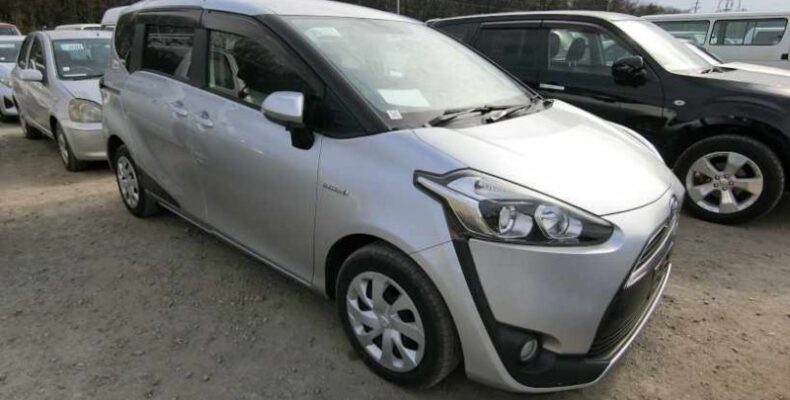The 21st century revolutionized the auto industry where old norms and customs are no longer relevant. Nowadays everything goes and that is evident with the Toyota Sienta mini MPV. The minivan made its debut in 2003 in Japan and the ASEAN markets. The vehicle received so much praise that it is still available today. The Toyota Sienta is based on the Vitz compact car and as such it has a very unusual shape and design. The vehicle was manufactured to be a friendly companion to the daily commuter. Therefore, it was built to be economical, practical, and durable.
Exterior Looks
The initial design was very simple with bug-like headlights, a long body, and a hatch-door in the rear. The first-generation Sienta wasn’t the most attractive car on the road but it improved gradually when the facelift was introduced. After the refresh, many people took a liking to the vehicle and bought it to modify and present.
The facelifts continued for more than 10 years after which Toyota offered a redesign. The design change came in 2015 and it completely changed the Sienta’s looks. The new Sienta had sporty headlights, fog lights, and a bumper. The rear came with fresh new taillights and other design tweaks, making it look more like a Toyota Aqua than ever.
Interior Cabin
Inside the cabin, things were always focused on practicality. Therefore, the gear shifter could be found in the dash among other things. The first-generation’s interior was very simple with only the more important features included for your facility. A small screen, stereo system, and A/C were the special features.
The second-generation Sienta received a fresh new interior design with sporty looks. Toyota used a contrasting theme, leather on the steering wheel, high-grade plastic on the dash, an infotainment screen, knobs for A/C control, and the gear shifter in the dash.
Engine Dynamics
The Sienta uses one of Toyota’s most economical and successful engines to date. The 1NZ-FE served the Sienta for more than a decade. The engine teamed up with a 4-speed automatic or a Super CVT-I to take power to the front or four-wheel drive setup. The CVT gearbox was only offered in the Sport trims. For the second generation, Toyota offered a range of powertrains along with the 1NZ-FE to spice up things. As a result, the 1.5-liter 2NR-FE, 2ZR-FAE, 2NR-FKE, 1NZ-FXE were also offered. The transmission also got an upgrade with the CVT as standard across all model ranges while the 6-speed manual and the E-CVT also on offer.
The Sienta currently comes in a hybrid variant, which increases its fuel economy multiple folds. What’s more, this car performs exceptionally well in the city and thanks to its maneuverability you can take it anywhere with ease.
Verdict
The Toyota Sienta deserves praise for not only surviving but conquering the automotive market in such tough times. Currently, crossovers and SUVs are winning and they are slowly replacing the more compact vehicles. However, Sienta’s excellent fuel economy and reliability make it hard for many to make the shift to gas-guzzling bigger vehicles.
There are many Japanese Used Car, trucks buses, and farm tractors in all Japanese market.
If you want to import a Used Toyota Sienta, please check the recommended Japanese used car export companies for Toyota Sienta.
Top Recommended Japanese Used Car Export Companies for International Customers
If you want to know more details about specifications and models, please refer to Wikipedia or other catalogs.
